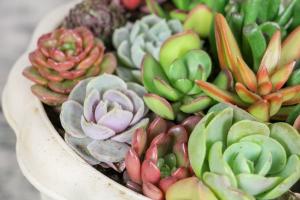How to Space Out Your Corn Plants to Maximize Yield
Corn is a staple crop that is grown all over the world. It is commonly used as an ingredient in many food products, but it is also used as a feed crop for livestock. One of the key factors that determine the yield of corn plants is the spacing of the plants. In this article, we will explore the ideal spacing for corn plants to maximize yield.
The Importance of Proper Spacing
Corn plants are heavy feeders and require a lot of space to grow properly. If the plants are spaced too close together, they will compete for resources like water, nutrients, and sunlight. This will result in stunted growth and a lower yield. On the other hand, if the plants are spaced too far apart, there will be wasted space in the field, resulting in a lower overall yield.
The Ideal Spacing for Corn Plants
The ideal spacing for corn plants will depend on several factors, including the soil type, climate, and variety of corn being grown. In general, most farmers space their corn plants between 8 and 12 inches apart within the rows, and the rows themselves are spaced around 30 to 36 inches apart. This spacing allows for optimal access to sunlight, nutrients, and water for each individual plant, while still maximizing the overall yield of the field.
Factors to Consider when Determining Spacing
If you are unsure about the ideal spacing for your corn plants, there are several factors you should consider. These include:
Soil type: Some soils are higher in nutrients than others, so the spacing of your plants may need to be adjusted depending on the fertility of your soil.
Climate: In dry or arid climates, plants may need to be spaced farther apart to ensure they receive enough moisture, while in wet climates, they can be spaced closer together.
Corn variety: Different varieties of corn have different growth habits and requirements, so it is important to research the specific needs of the variety you are planting.
Equipment limitations: If you have a specific type of equipment that you use to plant and maintain your corn, the spacing of your plants may need to be adjusted accordingly.
Ongoing Maintenance
Once you have determined the ideal spacing for your corn plants, it is important to maintain this spacing throughout the growing season. This may involve thinning out plants that are too close together, or replanting areas where seeds did not germinate.
You should also monitor your plants regularly for signs of stress or nutrient deficiencies, as these can indicate that your spacing is not optimal. Making adjustments to your spacing as needed will help ensure that your corn plants are healthy and productive throughout the growing season.
Conclusion
Proper spacing is critical to the success of your corn crop. By ensuring that your plants have optimal access to nutrients, water, and sunlight, you can maximize your yield and ensure a healthy harvest. Keep in mind the factors we have discussed when determining the ideal spacing for your corn plants, and make adjustments as needed to ensure ongoing success.

 how many times do yo...
how many times do yo... how many planted tre...
how many planted tre... how many pine trees ...
how many pine trees ... how many pecan trees...
how many pecan trees... how many plants comp...
how many plants comp... how many plants can ...
how many plants can ... how many plants and ...
how many plants and ... how many pepper plan...
how many pepper plan...































